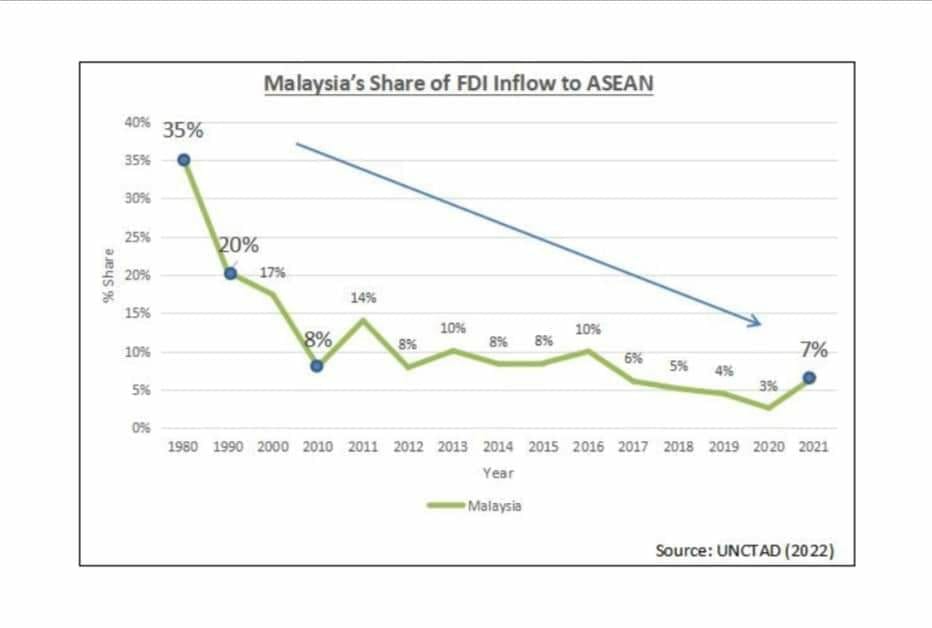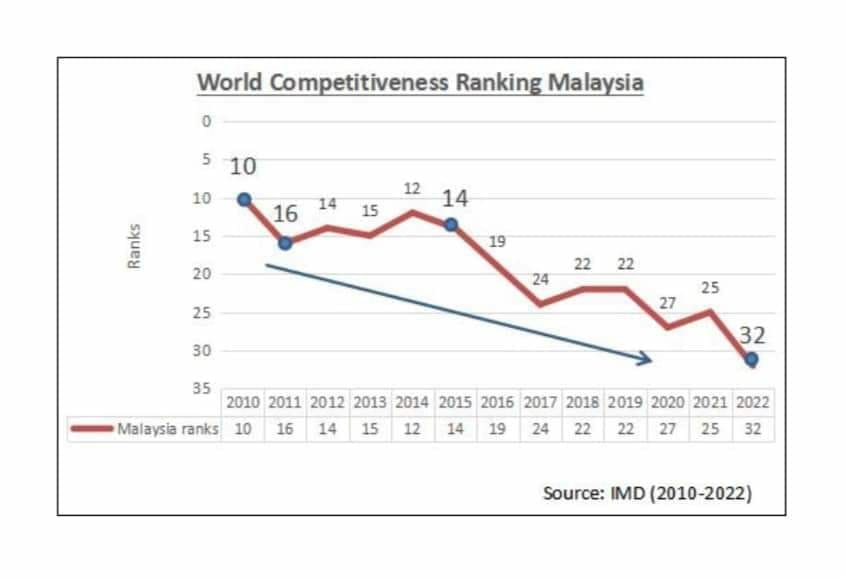The amount of foreign direct investment (FDI) has indeed increased from RM7.1 billion (1990), to RM14.4 billion (2000) and RM32.4 billion (2019). But Malaysia’s competitiveness to attract foreign investment is fading, and this is worrying.
According to Malaysian Institute Of Economic Research Former Senior Research Officer Samirul Ariff Othman, among ASEAN countries, Singapore remains the champion, now attracting more than half of FDI entering Southeast Asia (1990: 43%, 2000: 68%, and 2019: 60%. On the other hand, Malaysia’s position fell sharply, from 20% (1990), 17% (2000), and 4% (2019).
Neighboring countries such as Vietnam, Indonesia, Thailand and the Philippines are now increasingly prominent. Malaysia must immediately wake up, take aggressive action and commit to re-strengthen the country’s competitiveness as a hub of choice for global investment.
In the broader context of global competitiveness, Malaysia’s position is declining. Based on the rating by IMD (Global Competitiveness Index), Malaysia’s best achievement was when the country got ranked 10th in the world in 2010. In 2019, Malaysia fell to 22nd.
Clearly, this trend shows that Malaysia’s competitiveness is fading. There must be significant changes, convincing investors that Malaysia is serious about implementing reforms.
Global competition is intensifying after the Covid-19 pandemic and the global geo-political pattern is changing. Malaysia must formulate a new strategy immediately.
“Don’t be complacent. Strengthen and highlight our strengths. National Investment Aspiration (NIA) is not only the responsibility of MITI and its agency MIDA. The pace of investment actually depends on all ministries. There must be unity between all ministries and agencies and decision-making at the Federal, State, and Local Authority levels,” said Samirul.
“Hopefully with the new name, the Ministry of Investment, Trade and Industry, Malaysia will be more aggressive in increasing its competitiveness to attract investment,” said Samirul, adding that he limited the data analysis to 2019 to reflect on the country’s position before the Covid-19 pandemic.











